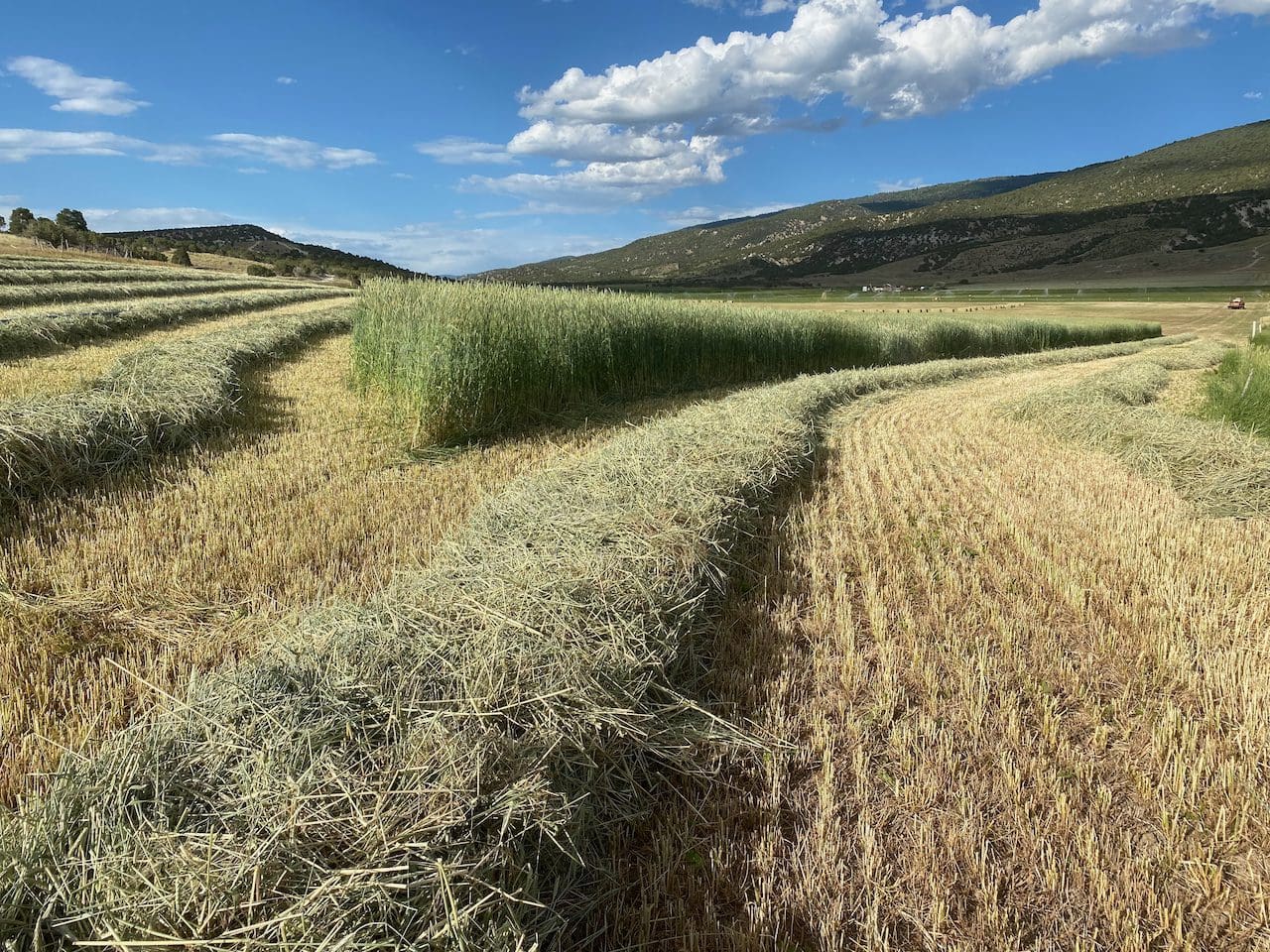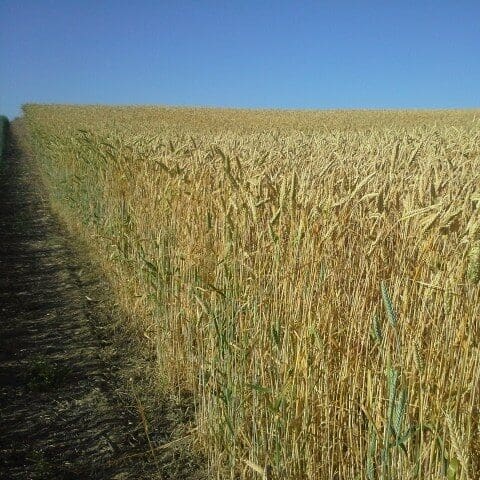Whether you’re looking for a fast-growing, high-yielding crop, rotating out of alfalfa, or trying to improve overall soil health, small grains have proven to be one of the most versatile options out there. Over the years, we’ve offered a wide range of small grain varieties here at Great Basin Seed—spring and fall types, drought-tolerant and irrigated options, and selections bred specifically for forage or grain.
Two of our most popular and time-tested products are the Prosper Spring Grain Forage Mix and the Fall Forage Blend. Both have been carefully developed and selected to deliver premium feed quality—whether you’re putting up hay or chopping silage. While specific varieties in each mix can change seasonally (depending on growing conditions and what performs best), you can always expect strong yields and heavy cuttings compared to a single-species crop. We’ve also seen time and again that cattle tend to prefer these blends over single grains—helping them pack on the pounds more efficiently.
With over 50 years of seed development behind them, the Prosper Spring Mix and Fall Forage Blend are built to deliver nutrition, tonnage, and flexibility. But if you’re wondering, “What’s the real difference between the two? When should I plant them? And how do you choose what goes in each mix?” — let’s break it down.
Mix Components: What’s in the Mix and Why?
While the Prosper Spring Mix and Fall Forage Blend are planted during different times of the year, they share many of the same benefits—starting with their use of beardless (awnless) grain varieties. That means no eye or respiratory issues in livestock and no need for thrashing—reducing labor and lowering your overall production costs.
Both mixes are built around strong, upright varieties that resist lodging and produce heavy grain yields. Cattle tend to show a clear preference for these mixes compared to single-species hay. And thanks to the variety of grains in each blend, there’s a lower risk of nitrate toxicity, which is more common in monocultures like straight oats or triticale. With a more balanced nutritional profile and reliable performance, these blends have become a trusted staple throughout the Intermountain West.
Prosper Spring Forage Mix:
The Prosper Spring Mix combines spring beardless wheat, beardless barley, and oats—ideal for planting in the early spring and harvesting in summer. These varieties are bred for quick establishment, strong forage production, and excellent feed value. Unlike winter or facultative grains, spring types don’t require cold vernalization, so they germinate quickly and grow aggressively during the spring season.
Oats are often the dominant grain in spring mixes, valued for their fast growth and palatability. Barley and wheat add structure, tonnage, and diversity to the blend—delivering both yield and quality in a short growing window.
Fall Forage Blend:
Modeled after the popular spring mix, the Fall Forage Blend features beardless barley, beardless wheat, and triticale—but with one key difference: all components are true fall-planted, winter-hardy varieties.
Designed for autumn planting, these grains establish strong root systems before winter and are tough enough to withstand snow, frost, and fluctuating temperatures. As soon as conditions warm up in the spring, they kick back into gear and grow rapidly—offering an abundant early-season forage harvest. Whether you’re looking for hay, silage, or early grazing, this blend is designed to maximize tonnage and nutrition right when you need it.
Helpful Hint: The Fall Forage Blend performs well in dryland conditions, making use of winter and early spring moisture to fuel strong growth when it matters most. If you’re facing drought or limited irrigation, this could be a smart option for your operation.
Planting Time: Tips for Success
Whether you’re planting in the spring or fall, timing and technique are key to getting the most out of your forage crop. Below are a few best practices and tips for planting both our Prosper Spring Forage Mix and Fall Forage Blend to help ensure strong establishment and optimal yield.

Prosper Spring Forage Mix
Spring grains can be planted early in the spring and even later into the summer, as long as moisture is available. The warmer the weather, the more water is required to support germination and establishment.
Spring Planting Guidelines:
-
Plant when soil temperatures reach at least 40°F
-
Optimal soil temperature for germination: around 50°F
-
Ideal nighttime temperatures: consistently above 40°F
-
Best germination and early growth occurs below 80°F, but with irrigation, spring grains can be planted in warmer conditions
-
Seeding depth: 1–2 inches
-
Recommended seeding rate: 80–120 lbs/acre
Tip: If you’re planting late in the summer, ensure consistent irrigation to help the crop get up and established quickly.
Fall Forage Blend
Fall grains need to be planted early enough to allow root establishment before winter, but late enough to prevent the crop from reaching full maturity and forming seed heads before dormancy. In the Intermountain West, planting in August is typically too early—this can trigger full maturity, preventing spring regrowth. The ideal window for planting is September through early November, depending on your region and weather outlook.
Many producers take advantage of early fall growth for light grazing, but be cautious not to graze too short.
Fall Planting Guidelines:
-
Plant at least 4 weeks before the ground freezes
-
Ideal nighttime temperatures for planting: above 40°F
-
Do not allow the crop to head out in the fall—this prevents regrowth in spring
-
For grazing: don’t graze below 4–6 inches to ensure strong spring regrowth
-
Dormant planting is also an option—seeding late enough in the fall that soil temperatures are too cold for germination (often in November), allowing natural germination in early spring
-
Fall grains will resume growth in spring when soil temperatures begin to warm—usually in April or May, depending on the year
-
Seeding depth: 1–2 inches
-
Recommended seeding rate: 80–120 lbs/acre

Variety Selection: Matching Goals and Genetics
Both Spring and Fall forage mixes offer strategic benefits.The best choice depends on your specific goals, available resources, and seasonal timing. Since our spring and fall mix varieties may vary from year to year, we recommend calling us for the most current details.
Need something custom?
All mixes can be modified or substituted. If you’re interested in creating a custom mix tailored to your needs, give us a call at #435-283-1411 — we’re happy to help.







